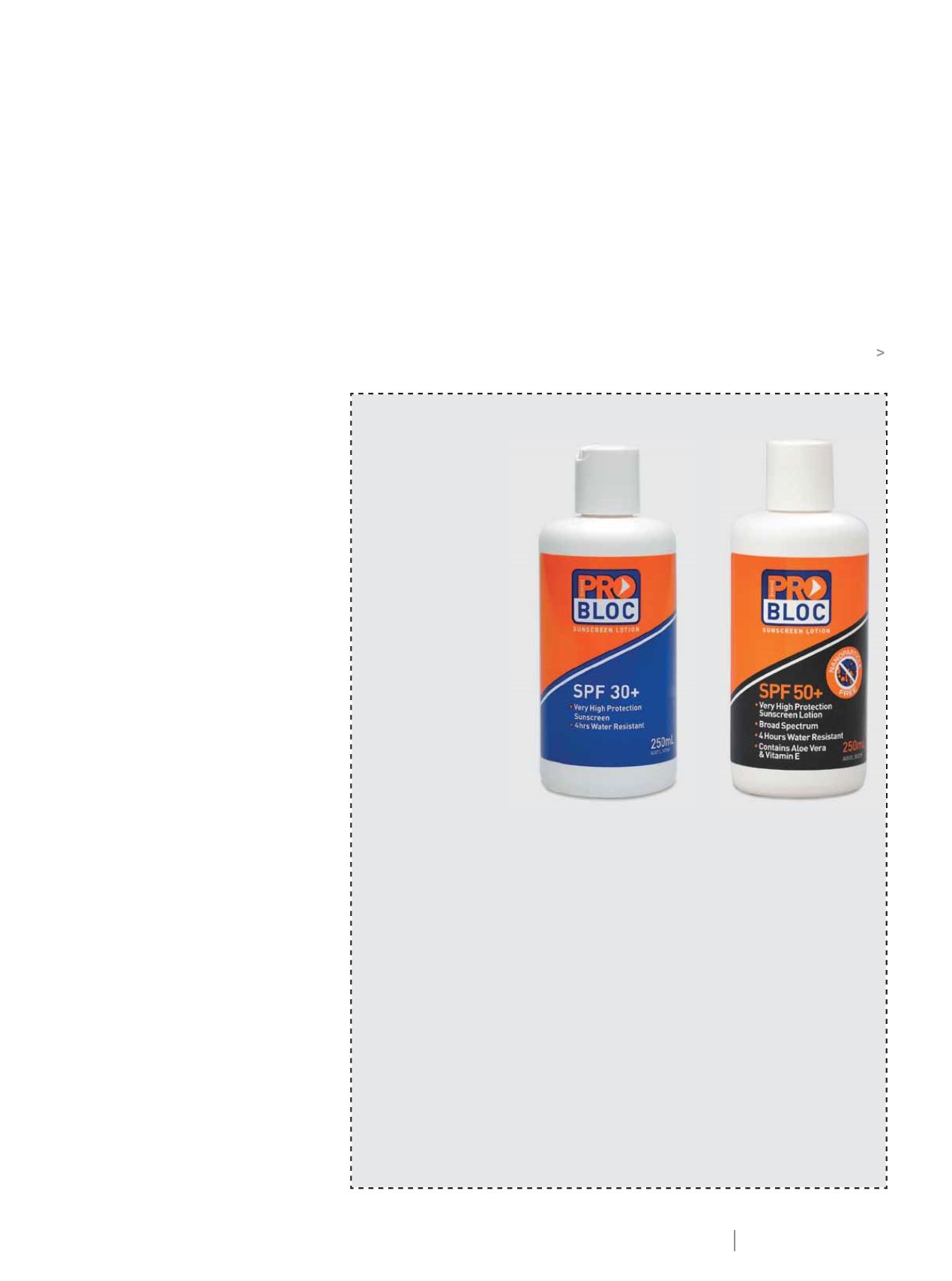

P L UMB I N G CO N N E C T I O N
S UMM E R 2 0 15
9 1
provide increased cell function, muscle
strength and overall performance,
as well as faster recovery times,
especially among those whose dietary
intake is inadequate.
ǩ
Branch Chain Amino Acids (BCAAs)
Described as the ‘building blocks of
life’, BCAAs are classified as essential
amino acids because the body cannot
manufacture them and they must be
ingested in food.
While a balanced diet should ensure
the body has or can produce the required
amino acids for most individuals, healthy
eating is not always achieved.
Further, research has found BCAA
supplements can improve physical
performance, exercise ability and brain
function.
ǩ
Supplement consumption guidelines
While drinking specifically prepared
electrolyte solutions with added BCAAs
can help maintain a healthy balance of
electrolytes and essential amino acids
and thus lead to improved physical and
mental abilities, just how much of these
drinks one should consume varies due
to differing individual diets, sweat rates
and sweat-sodium composition.
It is recommended a tailored approach
be implemented and refined to match
individual requirements.
ICE, ICE BABY
Consuming crushed ice at work can
increase wellbeing, productivity and
safety. Crushed ice ingestion – commonly
known as slushies – is being used
successfully on mines and construction
sites in the Australian tropics to reduce
cases of heat stress in workers and
increase productivity and safety, says
thermal physiologist Matt Brearley.
Hard physical labour on hot worksites
or in underground mines while wearing
heat-inducing personal protective
equipment (PPE) is a common scenario
for many Australians – described by
Matt as ‘industrial athletes’.
Workers often suffer heat stress
on these sites and may face impaired
judgement and a lack of co-ordination,
along with dizziness, nausea, headache
and a range of other unpleasant symptoms
that may also lead to a heat hangover.
Minimising heat stress among
workers is an important responsibility
for organisations and OHS officers in
ensuring a safe workplace.
According to Matt, the author of
the white paper
Heat Stress in the
Workplace
, there have been a number
of studies that have proven the
effectiveness of crushed ice ingestion in
minimising heat stress.
He described the studies as showing
crushed ice ingestion can substantially
lower core body temperatures by acting
as a heat sink in the body.
Those studies began on athletes
in 2003 and have also extended to
military officers, firefighters and miners
wearing protective clothing while
working in hot conditions.
Matt says the results consistently
showed that the ingestion of crushed
ice is superior in lowering core body
SPF 50+ VS SPF 30+... WHAT’S THE DIFFERENCE?
Sunscreen is a critical
element in protection
from the sun’s skin
cancer-causing
ultraviolet (UV)
radiation; however,
many people are putting
themselves at risk by
not applying sunscreen
correctly, according to
Cancer Council.
The group says part
of the cause is that the
Sun Protection Factor
(SPF) rating system is
often misunderstood,
particularly the benefit
of SPF 50+ over SPF
30+ and how sunscreen
protects the skin.
Sunscreen works by
filtering out the sun’s
harmful UV radiation
which reach earth in
two forms: UVA, which
has long been known to
cause aging and wrinkles and more recently proven to contribute to skin cancer risk
and UVB, which is the main cause of sunburn, skin damage and associated deadly
skin cancers. Cancer Council recommends that when choosing a sunscreen it should
be at least 30+, water resistant and labelled as ‘broad spectrum’, meaning it protects
against both UVA and UVB radiation.
SPF 30+ sunscreen filters out 96.7% of UVB radiation while SPF 50+ sunscreen
filters out 98%. Despite the 30+/50+ labelling hinting at a significant increase in
protection, SPF 50+ filters only an extra 1.3% of UVB rays, which Cancer Council says
can give people a false sense of security and lead them to apply less sunscreen or
not apply it as often.
Guidelines call for both SPF 30+ and SPF 50+ sunscreen to be applied every two
hours (regardless of what the packaging says) or after swimming, sweating or towel
drying. While some sunscreens may provide resistance to water and sweat they are
not waterproof and can also be rubbed off.
Usage recommendations call for approximately 35ml to be used on an average size
adult – or one teaspoon per limb, face and front and back of the body. This liberal and
regular application of sunscreen in combination with other sun protection measures
such as broad-brimmed hats, protective clothing, sunglasses and shade is essential
to minimise your risk of deadly skin cancer.
ProChoice
www.prochoice.com.au















